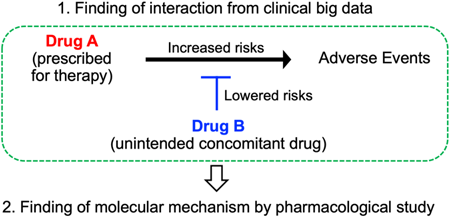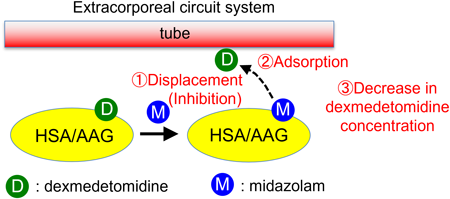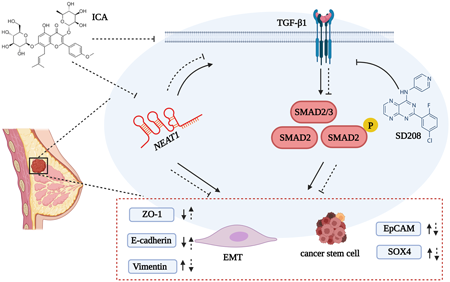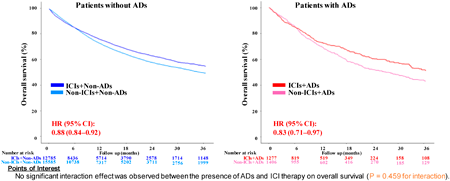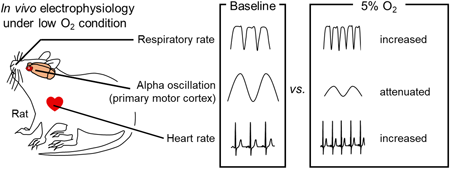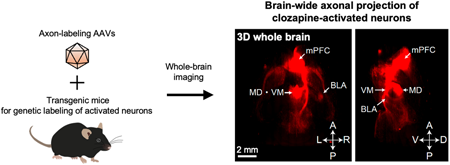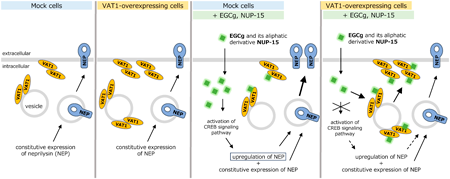47 巻, 2 号
選択された号の論文の28件中1~28を表示しています
- |<
- <
- 1
- >
- >|
Review
-
 2024 年 47 巻 2 号 p. 345-349
2024 年 47 巻 2 号 p. 345-349
発行日: 2024/02/01
公開日: 2024/02/01
-
2024 年 47 巻 2 号 p. 350-360
発行日: 2024/02/01
公開日: 2024/02/01
PDF形式でダウンロード (16902K) HTML形式で全画面表示
Regular Article
-
2024 年 47 巻 2 号 p. 361-365
発行日: 2024/02/03
公開日: 2024/02/03
PDF形式でダウンロード (507K) HTML形式で全画面表示 -
2024 年 47 巻 2 号 p. 366-372
発行日: 2024/02/06
公開日: 2024/02/06
PDF形式でダウンロード (9503K) HTML形式で全画面表示 -
2024 年 47 巻 2 号 p. 373-382
発行日: 2024/02/06
公開日: 2024/02/06
PDF形式でダウンロード (6570K) HTML形式で全画面表示 -
2024 年 47 巻 2 号 p. 383-388
発行日: 2024/02/08
公開日: 2024/02/08
PDF形式でダウンロード (656K) HTML形式で全画面表示
Note
-
2024 年 47 巻 2 号 p. 389-393
発行日: 2024/02/08
公開日: 2024/02/08
PDF形式でダウンロード (595K) HTML形式で全画面表示 -
2024 年 47 巻 2 号 p. 394-398
発行日: 2024/02/08
公開日: 2024/02/08
PDF形式でダウンロード (3068K) HTML形式で全画面表示
Regular Article
-
 2024 年 47 巻 2 号 p. 399-410
2024 年 47 巻 2 号 p. 399-410
発行日: 2024/02/10
公開日: 2024/02/10
[早期公開] 公開日: 2024/01/13 -
2024 年 47 巻 2 号 p. 411-416
発行日: 2024/02/10
公開日: 2024/02/10
PDF形式でダウンロード (538K) HTML形式で全画面表示 -
2024 年 47 巻 2 号 p. 417-426
発行日: 2024/02/14
公開日: 2024/02/14
[早期公開] 公開日: 2024/01/30PDF形式でダウンロード (7390K) HTML形式で全画面表示 -
2024 年 47 巻 2 号 p. 427-433
発行日: 2024/02/16
公開日: 2024/02/16
PDF形式でダウンロード (3051K) HTML形式で全画面表示 -
2024 年 47 巻 2 号 p. 434-442
発行日: 2024/02/16
公開日: 2024/02/16
PDF形式でダウンロード (9009K) HTML形式で全画面表示 -
 2024 年 47 巻 2 号 p. 443-448
2024 年 47 巻 2 号 p. 443-448
発行日: 2024/02/16
公開日: 2024/02/16
Note
-
2024 年 47 巻 2 号 p. 449-453
発行日: 2024/02/17
公開日: 2024/02/17
PDF形式でダウンロード (922K) HTML形式で全画面表示
Regular Article
-
2024 年 47 巻 2 号 p. 454-461
発行日: 2024/02/20
公開日: 2024/02/20
PDF形式でダウンロード (1581K) HTML形式で全画面表示
Note
-
 2024 年 47 巻 2 号 p. 462-468
2024 年 47 巻 2 号 p. 462-468
発行日: 2024/02/20
公開日: 2024/02/20
Regular Article
-
2024 年 47 巻 2 号 p. 469-477
発行日: 2024/02/20
公開日: 2024/02/20
PDF形式でダウンロード (799K) HTML形式で全画面表示 -
2024 年 47 巻 2 号 p. 478-485
発行日: 2024/02/22
公開日: 2024/02/22
PDF形式でダウンロード (5111K) HTML形式で全画面表示 -
2024 年 47 巻 2 号 p. 486-498
発行日: 2024/02/22
公開日: 2024/02/22
[早期公開] 公開日: 2024/01/10PDF形式でダウンロード (18121K) HTML形式で全画面表示 -
2024 年 47 巻 2 号 p. 499-508
発行日: 2024/02/22
公開日: 2024/02/22
PDF形式でダウンロード (9259K) HTML形式で全画面表示 -
 2024 年 47 巻 2 号 p. 509-517
2024 年 47 巻 2 号 p. 509-517
発行日: 2024/02/23
公開日: 2024/02/23
-
2024 年 47 巻 2 号 p. 518-526
発行日: 2024/02/23
公開日: 2024/02/23
PDF形式でダウンロード (1173K) HTML形式で全画面表示
Note
-
2024 年 47 巻 2 号 p. 527-531
発行日: 2024/02/28
公開日: 2024/02/28
PDF形式でダウンロード (711K) HTML形式で全画面表示
Regular Article
-
2024 年 47 巻 2 号 p. 532-538
発行日: 2024/02/28
公開日: 2024/02/28
PDF形式でダウンロード (673K) HTML形式で全画面表示 -
2024 年 47 巻 2 号 p. 539-546
発行日: 2024/02/28
公開日: 2024/02/28
PDF形式でダウンロード (1173K) HTML形式で全画面表示
Errata
-
2024 年 47 巻 2 号 p. 547
発行日: 2024/03/02
公開日: 2024/03/02
PDF形式でダウンロード (122K) HTML形式で全画面表示 -
2024 年 47 巻 2 号 p. 548
発行日: 2024/03/02
公開日: 2024/03/02
PDF形式でダウンロード (99K) HTML形式で全画面表示
- |<
- <
- 1
- >
- >|

